Hatayama Power Station Site
In Ueda City, Nagano Prefecture, there is a historic site designated as a cultural property called the “Hatayama Power Station Site”.
The location is about 2.5 km north of the Ueda-Sugadaira Interchange on the Joshinetsu Expressway, on the right bank of the Kangawa River.
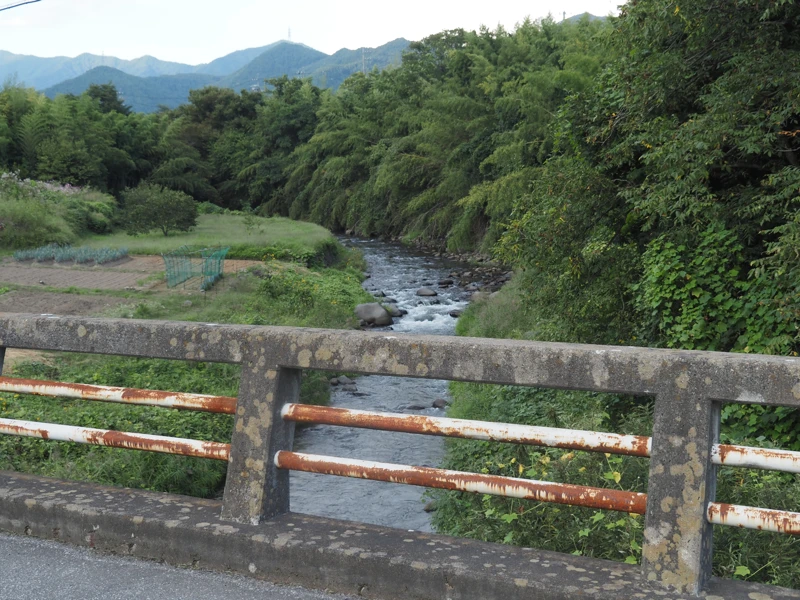
This photo was taken from a bridge crossing the Kangawa River.
In this photo, I’m looking upstream, but the power station site is on the opposite, downstream side.
So, let’s go see it.
Walking along the path between houses, I came upon a sign reading “Toishi-jo Castle Site Entrance.” I had walked from the right side of the photo and was heading left. By this point, there were no more houses; only a path continued between fields.
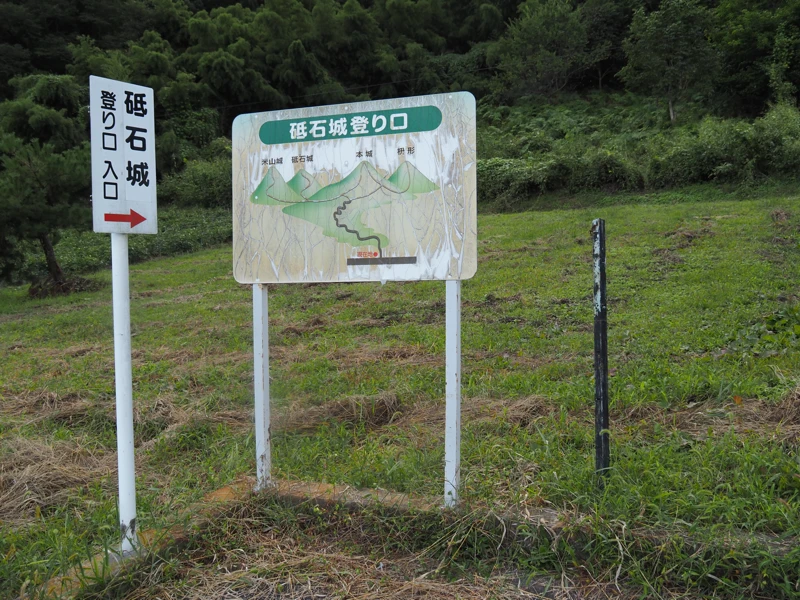
The fields ended, and the path led into thickets. As evening approached and I began to feel uneasy, I spotted a rectangular man-made object deep along the path.
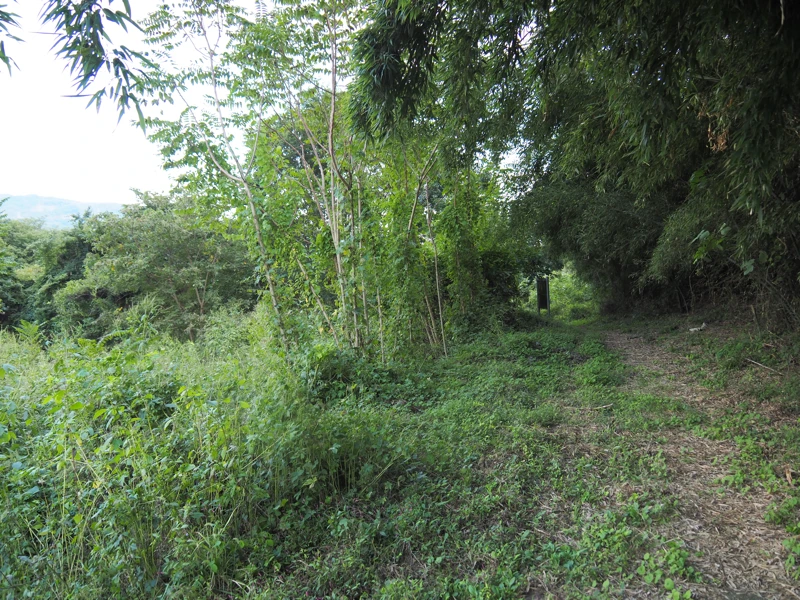
As I approached, I saw it was an information board.
It reads: “Ueda City Designated Cultural Property: Hatayama Power Station Site.”
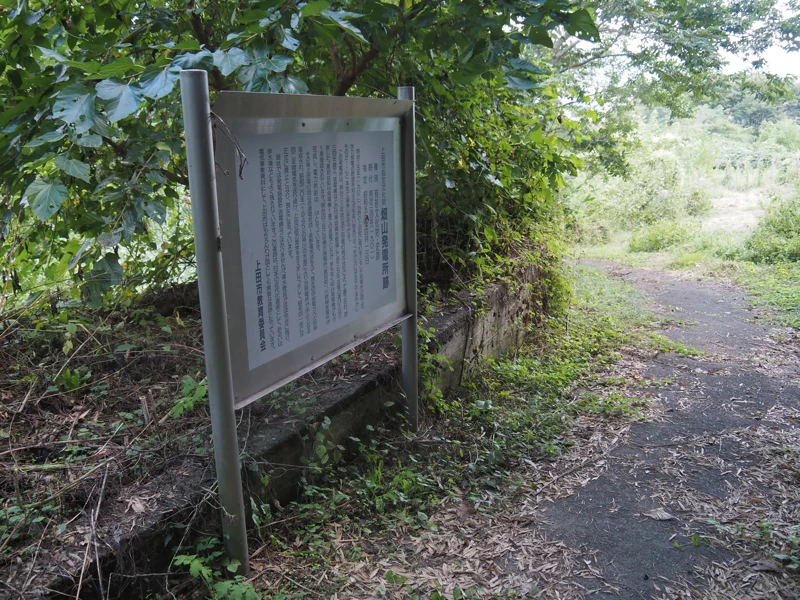
According to the sign, this power station was constructed by the Ueda Electric Light Company and completed in 1901.
The following year, it began supplying electricity with a single 60kW generator, lighting up the town of Ueda (as it was then). Shortly thereafter, another 60kW generator was added.
The latter part transcribes the text from the information board:
“Subsequently, Ueda Electric Light Co., Ltd. merged into Shinano Electric Co., Ltd., then Nagano Electric Co., Ltd., and was eventually absorbed into what is now Chubu Electric Power Co., Inc. It supplied electricity continuously for 42 years until operations ceased due to the Kangawa flood disaster in 1945, supporting the prosperity of Ueda Town. It was formally decommissioned in 1966, remaining so to this day.
While no power generation facilities or transmission lines remain today, the water conduit pipe is almost completely preserved, and drainage ditch is also well-preserved. This site is a valuable heritage site, not only for Ueda City but for Japan as a whole, representing both Japan’s modernization heritage and as a resource for the history of the electric power industry."
The explanatory panel, installed by the Ueda City Board of Education, stated that the site was designated as a cultural property in 1982.
The following is supplementary information.
Water for the power station was drawn from the confluence of the Kangawa and Seba Rivers, about 700 meters upstream, and channeled through a waterway. Initially, the waterway was constructed using timber, but it was replaced with a concrete channel in 1918.
Furthermore, while the explanatory panel states that “electric lights were lit in Ueda Town” when power generation began, this location was not part of Ueda Town. At the time, it belonged to Kamishina Village. Due to the power line configuration, a small part of the village (a few houses) could receive electricity simultaneously, but electric lights did not become widespread in the rural areas for some time.
Electric lights began increasing in Kamishina Village after 1911, and it wasn’t until 1932 that all areas had electric lights.
Now, let’s look at the steel pipe.
Walking along the road in front of the information board, it curves left and descends. The concrete along the road was the wall of the waterway.
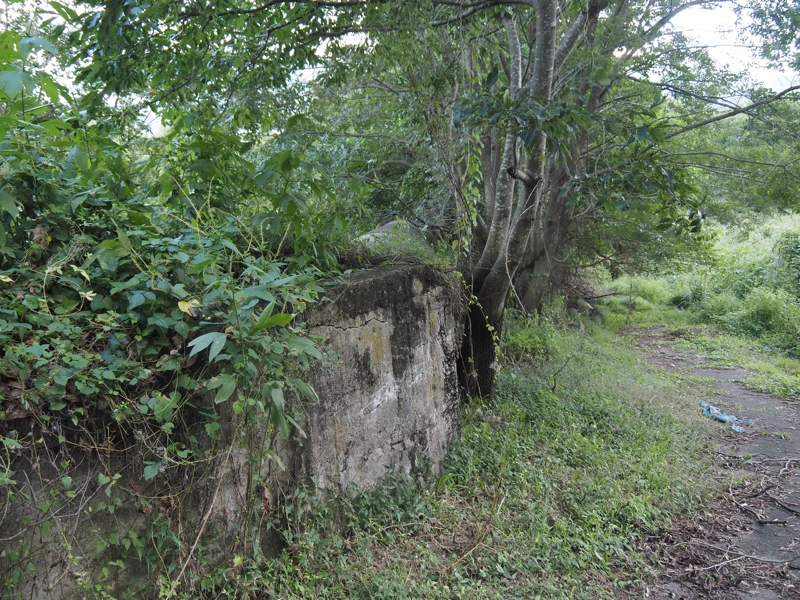
The concrete wall soon gave way to the steel pipe.
The outer diameter of the steel pipe is probably just over 1 meter.
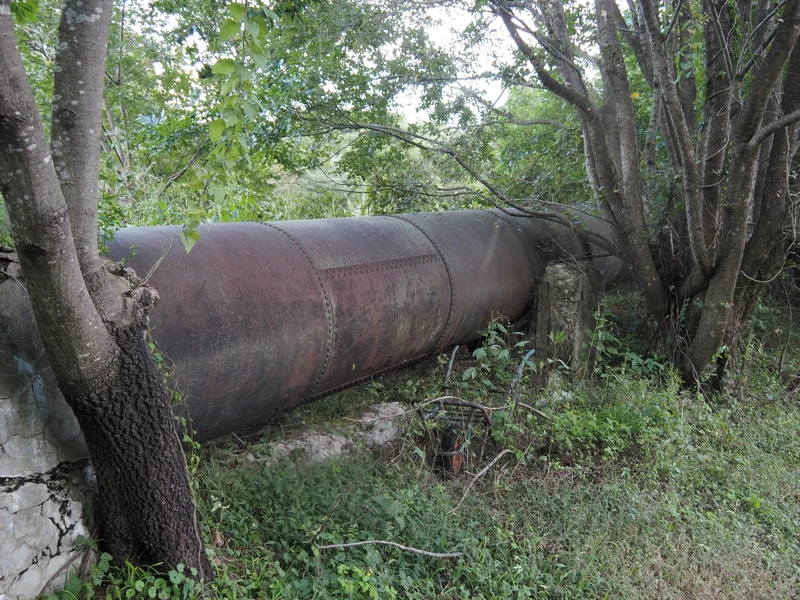
The path slopes down quite a bit, but the steel pipe stretches horizontally at a gentle angle. I climbed up the embankment from the path and got close to the pipe, but the overgrown trees made walking difficult. I gave up after advancing a few meters.
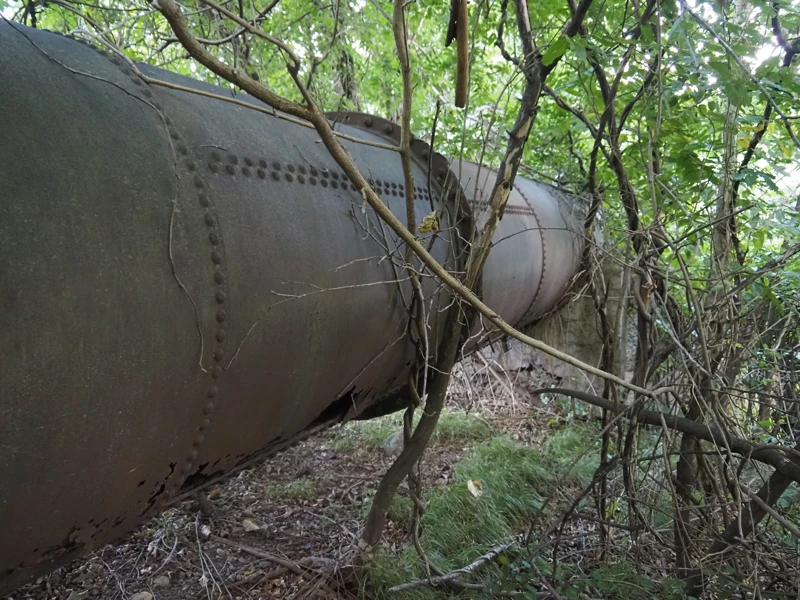
The path descending beside the pipe leads into thick brush, and I couldn’t tell where it went beyond that. It was evening, so I didn’t feel like pushing through.
I retraced my steps and tried to check the opposite side of the pipe from a nearby field, but as you can see, this side is also thick brush. (Actually, the pipe is visible in the center of the photo.)
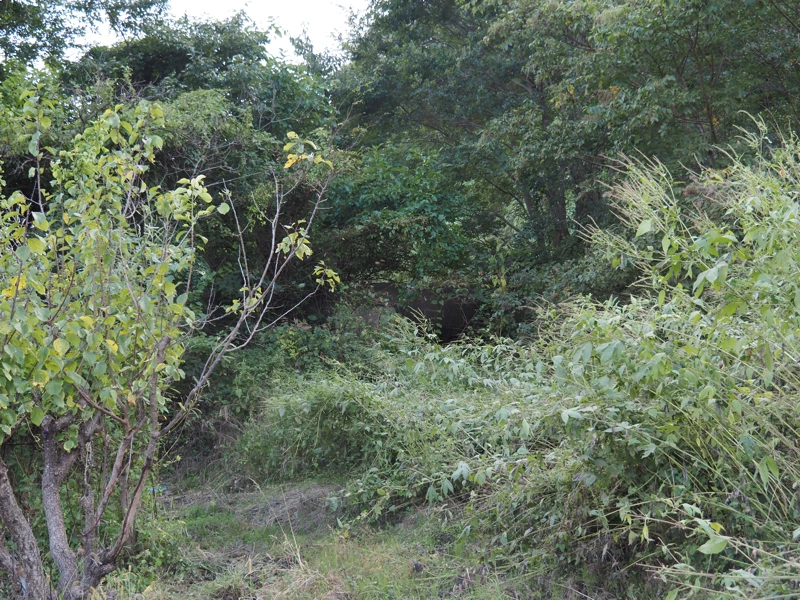
I definitely picked the wrong season to visit. If you don’t come in winter, you won’t be able to get through the brush.
The survey report for Ueda City’s designated cultural properties included measured drawings, so I created a diagram of the power station based on the drawing and other old photographs.
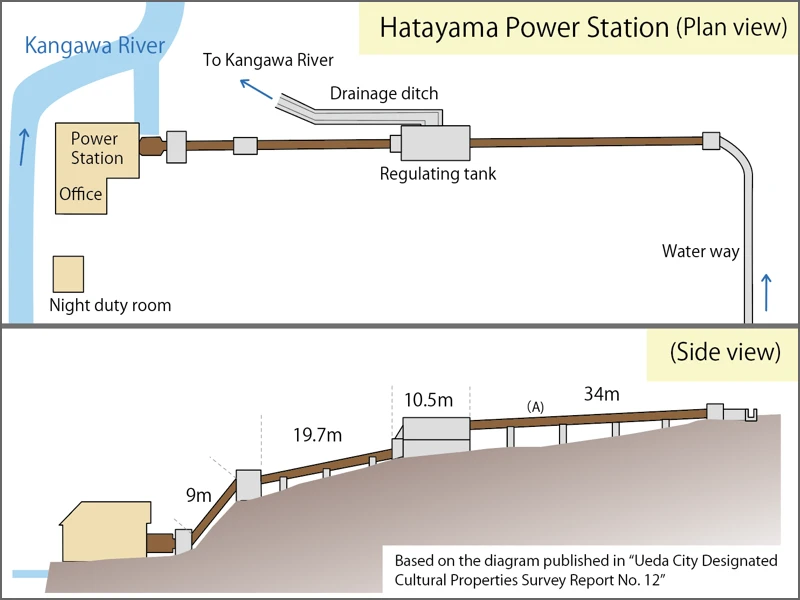
I added the power station buildings to the diagram, though none of the structures remain today. Books from the 1980s mentioned that the generator’s waterwheel was still present. Ueda City’s cultural properties website also features a photograph of the generator, but I wonder if it still exists.
This time, I thought I could only confirm the area up to point (A) on the right side of the regulating tank. I turned back at this location in the photo, so I couldn’t see further inside.
If I come in winter, will I be able to walk around the regulating tank?
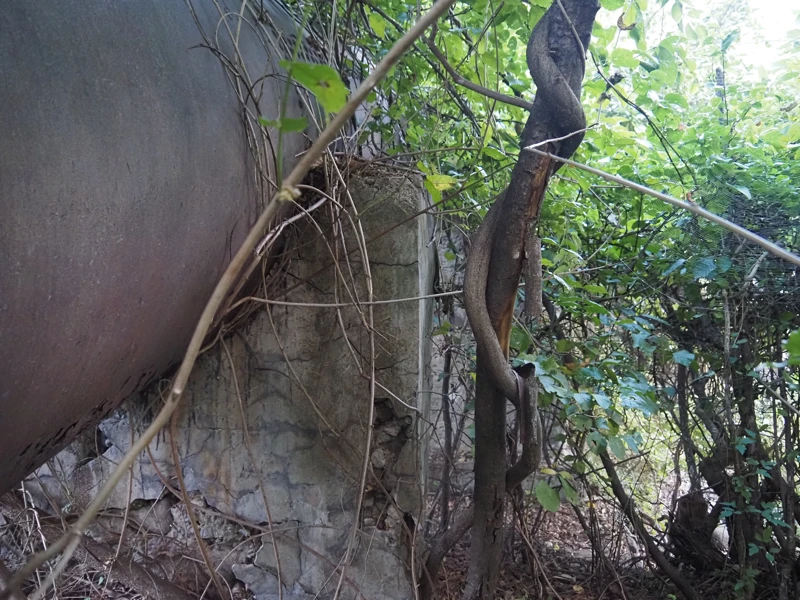
While turning back, I photographed the lower part of the steel pipe.
It’s rusted through at the bottom.
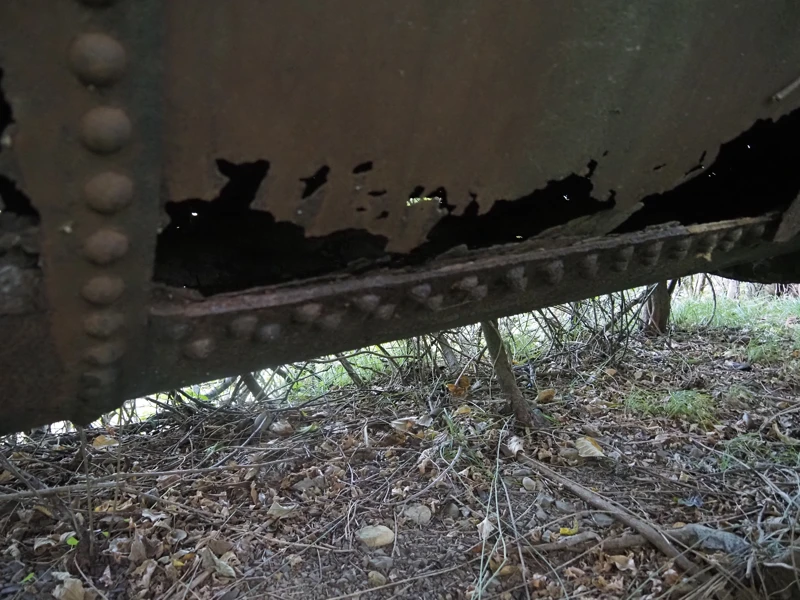
I later learned from a book that the land where this power station site is privately owned. Looking again at Ueda City’s materials (created in 2019), it still states the current owner of the cultural property is “an individual.” Given that, it seems best not to wander around near the site without permission.
Apparently, a pedestrian suspension bridge was built to allow access to the opposite side of the river when the power plant was operational. It seems not only power station personnel but also local residents used it, though it was dismantled after the power station ceased operations.
As I think there’s a path leading down to the riverbed somewhere, I’d like to check out the riverbed area someday.
[References] (written in Japanese)
“Kamishina Village History” (Kamishina Village History Editorial Committee / Kamishina Village History Publication Committee / 1968)
“Ueda City Designated Cultural Properties Survey Report No. 12” (Ueda City Board of Education Social Education Division / Ueda City Board of Education / 1983)
“Industrial Archaeology No. 27” (Industrial Heritage Society / March 1983)
“History of Hatayama District” (Edited and Published by Kayama Yuzaburo / 1985) (Not for Sale)
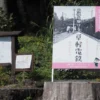
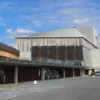
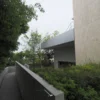
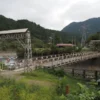
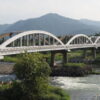
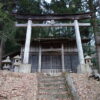
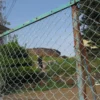
Discussion
New Comments
No comments yet. Be the first one!